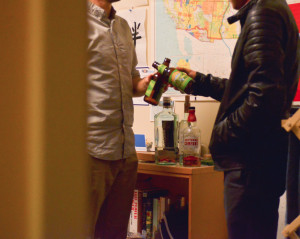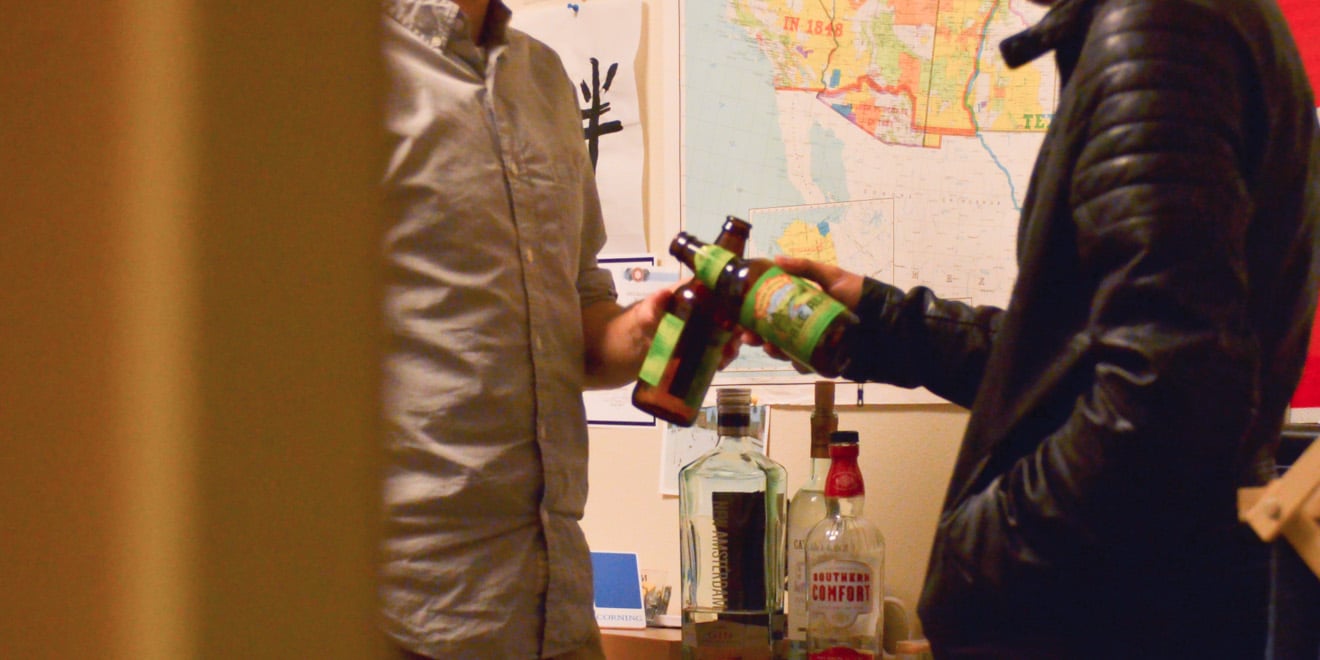This weekend, students will vote on a referendum opposing any full or partial ban on alcohol in student residences. The referendum is a response to an email sent last month by President John Hennessy and Provost John Etchemendy, who called on the student body to “begin renewing our community’s conversation” on alcohol.
With the email and upcoming referendum creating new discussion about a longtime issue on campus, The Daily looked back at Stanford’s alcohol policy over the years.

Early Alcohol Ban
For its first 17 years, the University allowed students to drink alcohol on campus. This policy crescendoed in the early 1900’s with “a wave of beer drinking” in 1907, according to the University’s first president, David Starr Jordan.
In 1908, following this proclamation and a campaign led by faculty and administrators, the Student Affairs Committee ruled to ban alcohol on campus and discipline any students found intoxicated.
The ban led more than 300 students to march on the house of the committee chairman in protest. After finding the chairman not at home, the mass of students walked to the Main Quad and shot firearms while marching to music.
Ban is Tested
Stanford banned students from possessing or drinking alcohol on campus for nearly 60 years. During this time, students held events such as dances and parties off-campus in order sidestep the prohibition.
“The gasoline used to get away from campus, would send several fleets of B-29’s around the globe,” declared a 1948 editorial in The Daily.
That same editorial called for an end to the alcohol ban and for beer with 3.2 percent alcohol-by-weight to be sold on campus.
The article stated that the University’s lack of willingness or ability to enforce the ban was damaging to the student body because it created an unhealthy attitude towards rules where reverence for the Fundamental Standard and Honor Code should exist. The Daily also noted that 3.2 percent alcohol-by-volume beer was allowed on campus under state code.
“Therefore nothing but precedent and tradition prohibit beer here,” The Daily wrote.
Students began campaigns to end the ban on alcohol in earnest during the 1950s.
As Palo Alto developed, students were able to drink nearer to campus than before, and the rise of cars had made the ban even less effective in preventing students from drinking. This increasingly open culture of alcohol spurred an anonymous group of Stanford parents to send a letter to other University parents in February of 1966, alerting them to drinking occurring off-campus.
“Yet, while good citizens slept, the neighboring city of Palo Alto has become a fertile ground for the schemes of unscrupulous liquor promoters,” the parents wrote, adding that students were able to drink just 120 feet from dorms at the Stanford View Barbecue.
Ban Repealed
The movement to repeal the University’s alcohol ban began during April 1966, when proposals to ease the alcohol policy went before the Board of Trustees. The Board subsequently authorized students over 21 to drink alcohol in campus residences.
That decision marked the University’s shift toward an increasingly hands-off stance towards alcohol consumption policing.
On April 20, 1966, Associate Dean of Students Joel Smith told members of the Stanford Mother’s Club that, under the new regulations, preventing violations of drinking laws would no longer fall under the University’s purview.
“We do not intend to encourage students to violate state laws, but we do not accept responsibility of student violation of the law,” Smith said.
To defend the change in policy, Smith cited increases in student safety, arguing that students would no longer be returning from off-campus parties intoxicated. He also argued that the more lax rules created a less hypocritical culture, because the previous alcohol policy was incompletely enforced.
Although Smith said the decision was not motivated by a desire to bring more social life back to campus, he acknowledged that fewer events occurred on campus because of the drinking ban, a point that was also mentioned in the 1948 Daily editorial.
Alcohol in Dorms
During the mid-1980s, Residential Education (ResEd) attempted to reduce alcohol consumption in dorms through stricter policies and increased reporting.
In 1984 Alice Supton, assistant dean of student affairs for ResEd, said ResEd wished to “de-emphasize drinking alcohol at orientation parties and all parties during the year.”
This statement coincided with new forms encouraging RAs to report all incidents involving alcohol, including student hangovers.
A year later ResEd pushed to eliminate drinking games in residences, instructing RAs to ask students playing drinking games to stop, and report those who continued playing.
In 1990 the University made three changes to alcohol policy: It banned alcohol in all athletic facilities, discontinued alcohol advertisements at sporting events and limited parking for people with drunk driving convictions.
At this time the University also considered a fourth regulation, a ban on the purchase of alcohol with dorm funds. But due to strong student opposition, the ban was considered impassable and dropped.
However, in 2000, Stanford did indeed ban the use of dorm funds to purchase alcohol. Previously, only all-freshman dorms were prohibited from doing so, while all other dorms made the decision by vote during house meetings.
Students expressed concern that the policy would put a damper on social events around campus.
The University further tightened its alcohol policy in 2003 when it prohibited drinking in the common areas of all-freshman dorms.
RAs and resident fellows (RFs) worried that the new policy would lead to a more introverted drinking culture and change the relationship between RAs and their residents.
“The change in regulation does introduce the role of enforcement into the RA-resident [relationship]” said Stephen Stedman, the RF for Larkin at the time. “That’s certainly a concern.”
Throughout Stanford’s history, the somewhat nebulous nature of University alcohol policy has led to differences in enforcement between various dorms.
For example, in 2006, Trancos — a four-class dorm at the time — allowed events with alcohol in common areas, as long as the event had prior approval and a host who was over the age of 21. In contrast, in Toyon, alcohol was only allowed outside of rooms on weekend nights.
Contact Regan Pecjak at reganp ‘at’ stanford.edu.
